Abstract
The present study attempted to assess the incidence of target diseases of the Expanded Programme on Immunization (poliomyelitis, tetanus, measles, pertussis, neonatal tetanus, diphtheria), using cluster samples and a household interview form. The results suggest that this method can indeed serve to estimate the incidence of these diseases with reasonable precision and may also be used to demonstrate reduction in incidence for the more common diseases. Analysis of 37 surveys for poliomyelitis and neonatal tetanus in India revealed a relative uniformity in the design effect (i.e., the ratio of the variance for the cluster estimate to the variance for the binomial estimate) for diseases with low incidence and prevalence. Diseases with higher prevalence tend to have a larger design effect, which may be indicative of the epidemic and “clustered” nature of the disease. A large design effect, therefore, does not necessarily indicate a need for a larger sample size, particularly if precision is acceptable. There is no one single design that is ideal for all surveys of disease incidence and decisions must be made in the light of local conditions and available resources.
Full text
PDF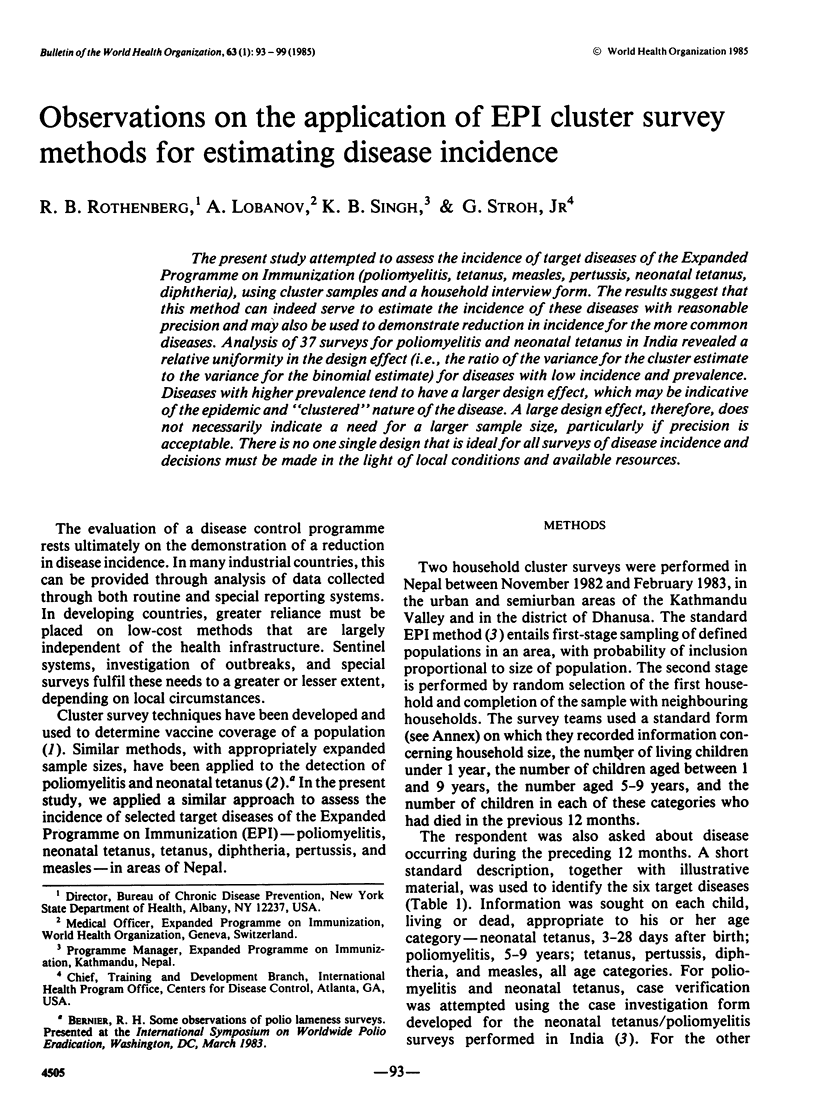
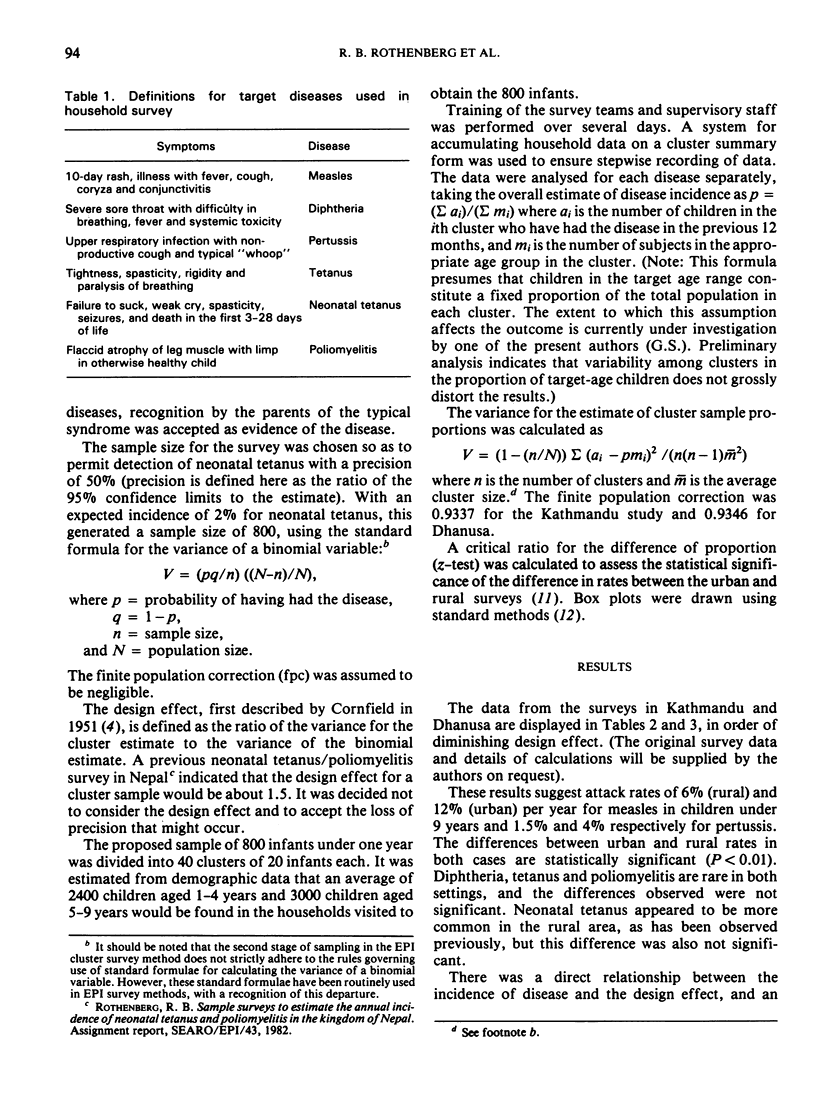
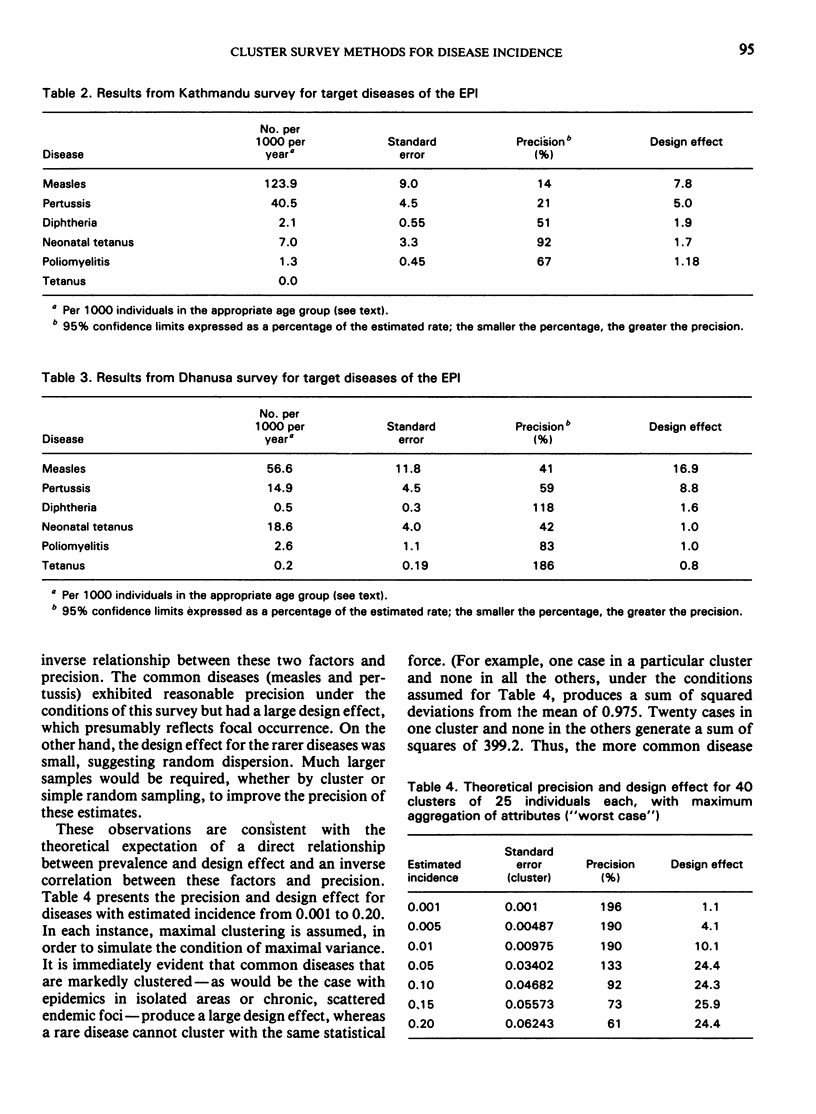
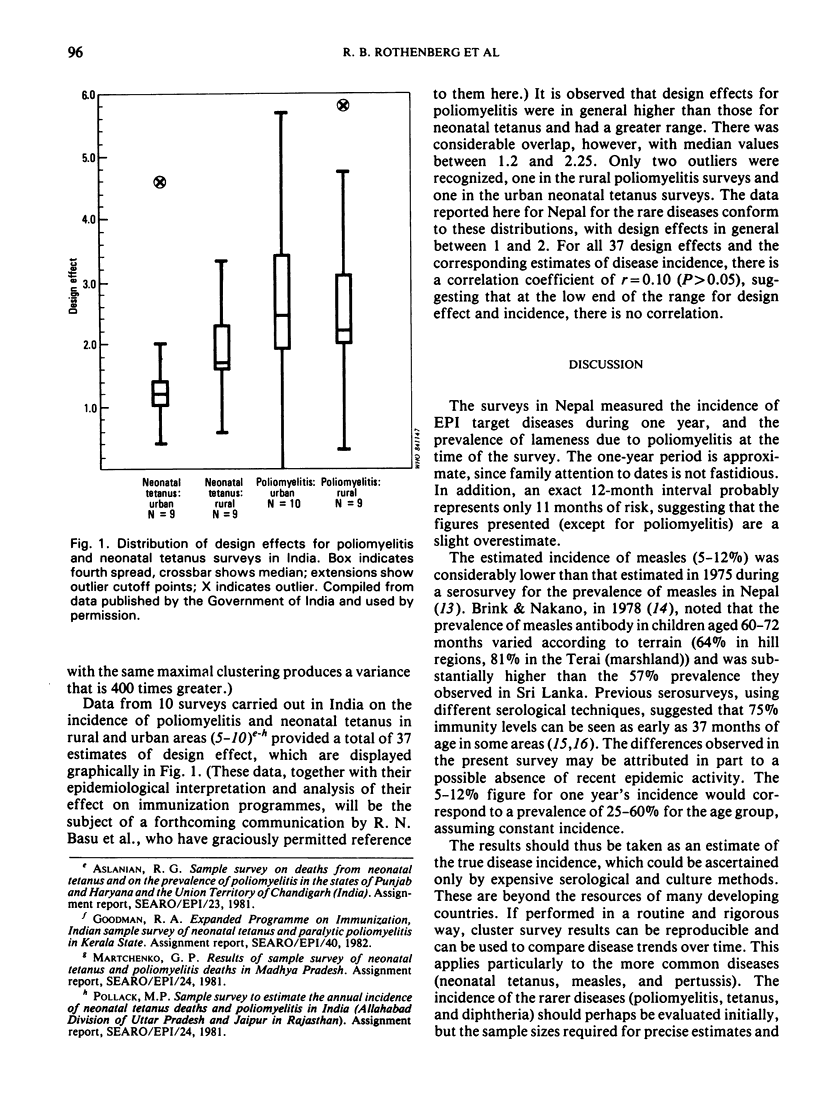
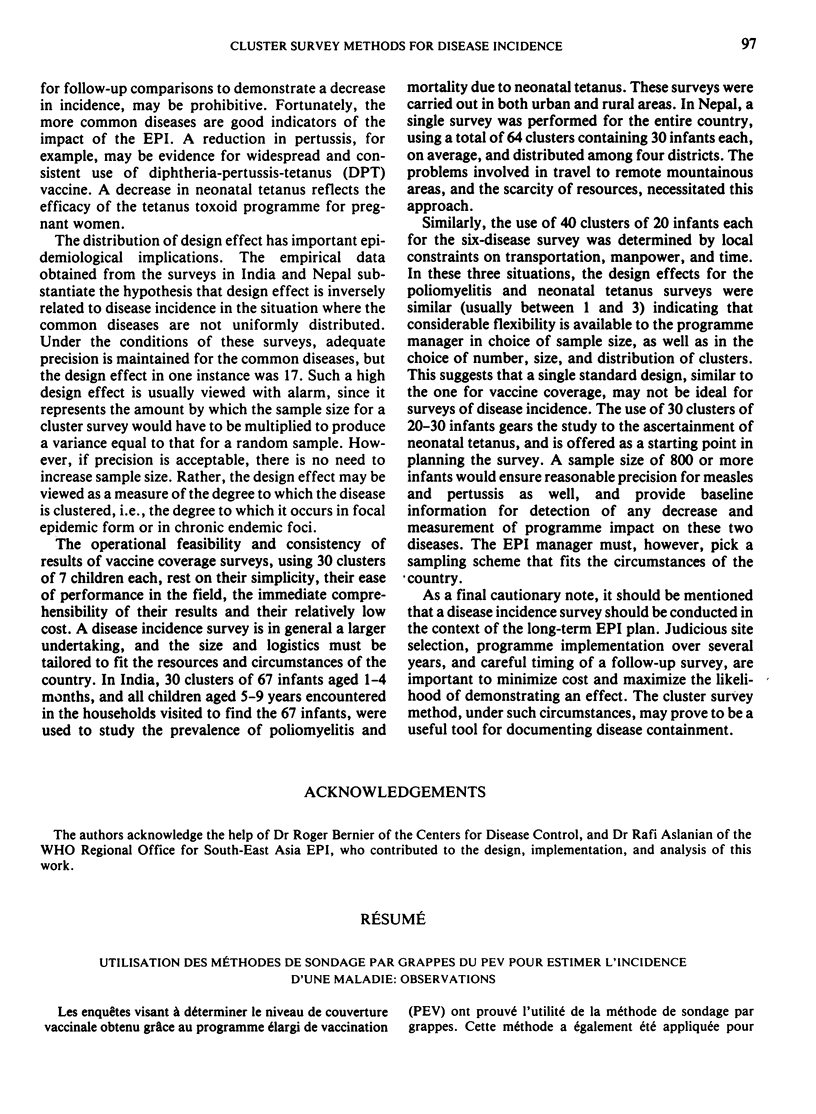
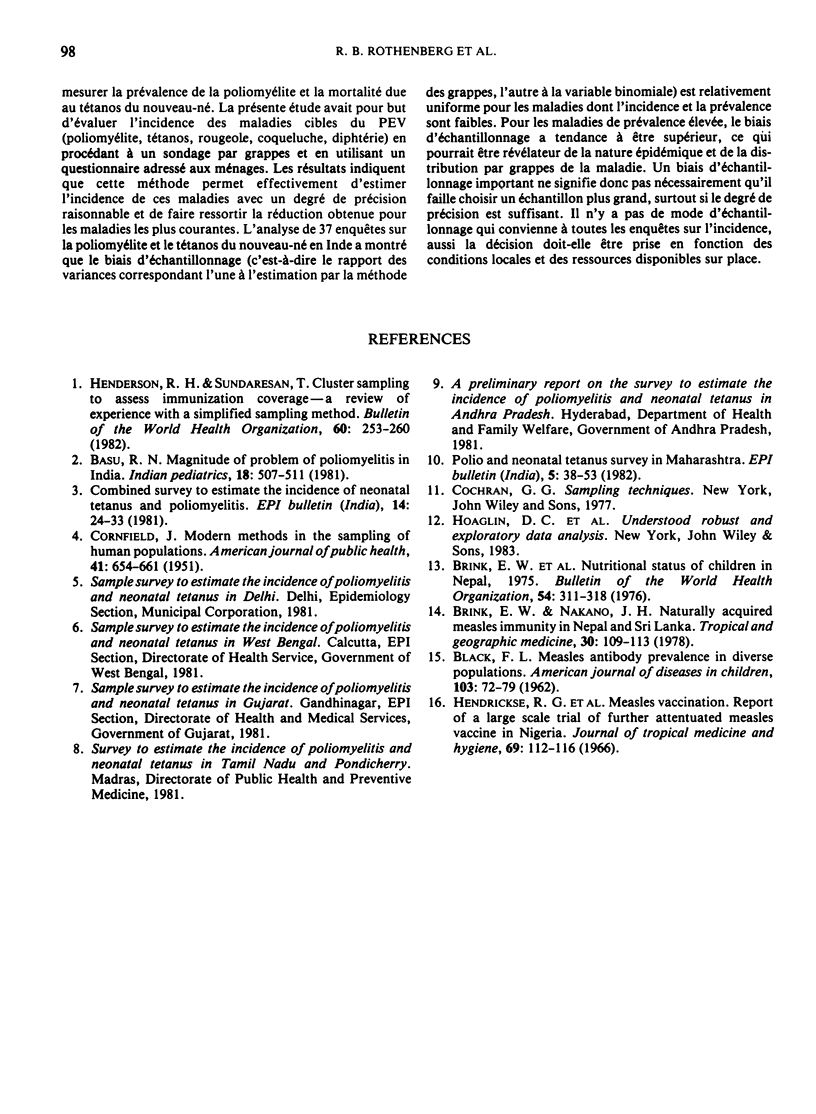
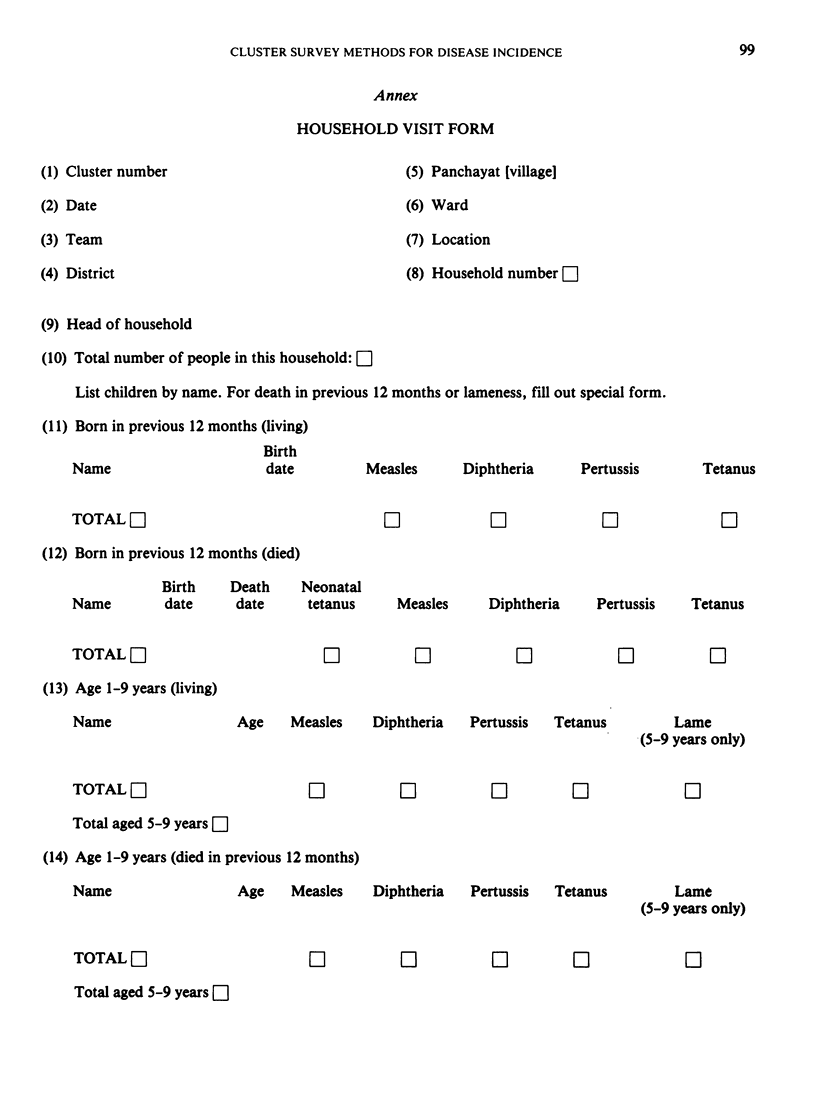
Selected References
These references are in PubMed. This may not be the complete list of references from this article.
- Basu R. N. Magnitude of problem of poliomyelitis in India. Indian Pediatr. 1981 Aug;18(8):507–511. [PubMed] [Google Scholar]
- Brink E. W., Khan I. H., Splitter J. L., Staehling N. W., Lane J. M., Nichaman M. Z. Nutritional status of children in Nepal, 1975. Bull World Health Organ. 1976;54(3):311–318. [PMC free article] [PubMed] [Google Scholar]
- Brink E. W., Nakano J. H. Naturally acquired measles immunity in Nepal and Sri Lanka. Trop Geogr Med. 1978 Mar;30(1):109–113. [PubMed] [Google Scholar]
- Henderson R. H., Sundaresan T. Cluster sampling to assess immunization coverage: a review of experience with a simplified sampling method. Bull World Health Organ. 1982;60(2):253–260. [PMC free article] [PubMed] [Google Scholar]
- Hendrickse R. G., Montefiore D., Peradze T., Sherman P., Powell M. Measles vaccination. Report of a large scale trial of further attenuated measles vaccine in Nigeria. J Trop Med Hyg. 1966 May;69(5):112–116. [PubMed] [Google Scholar]


